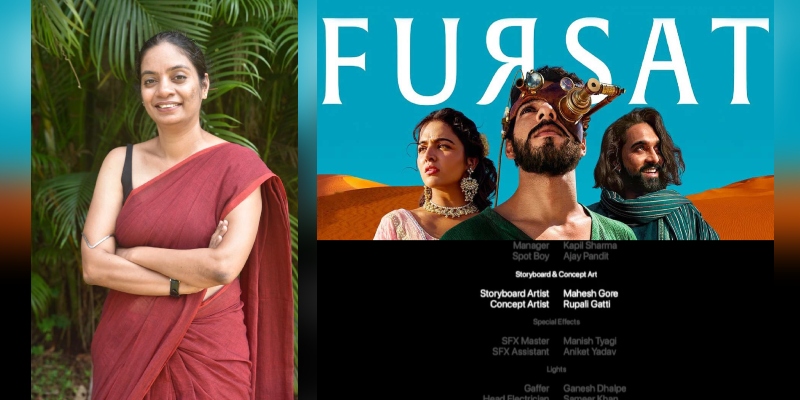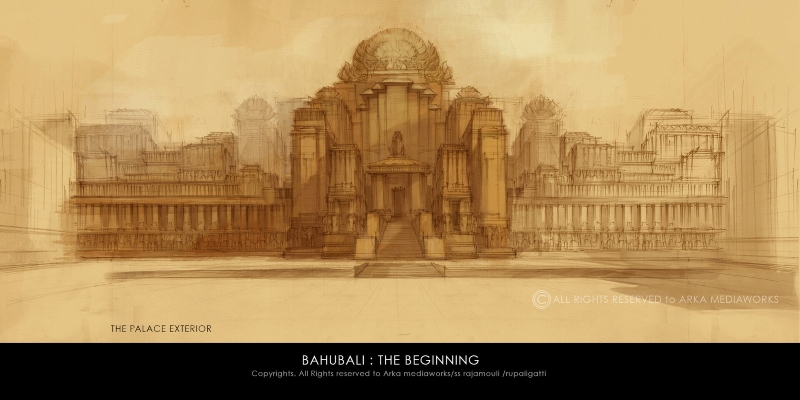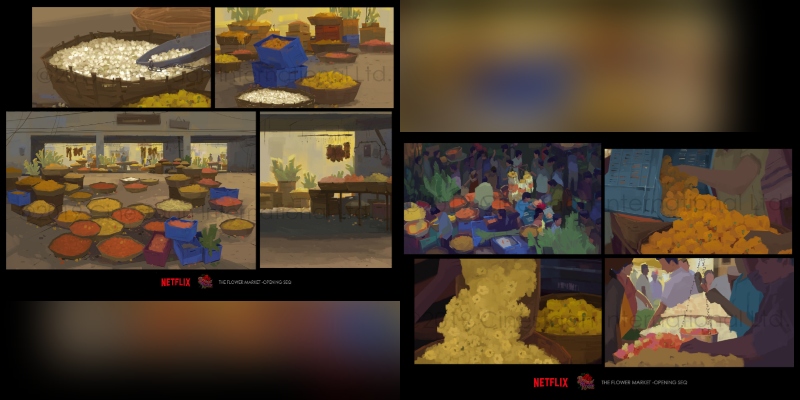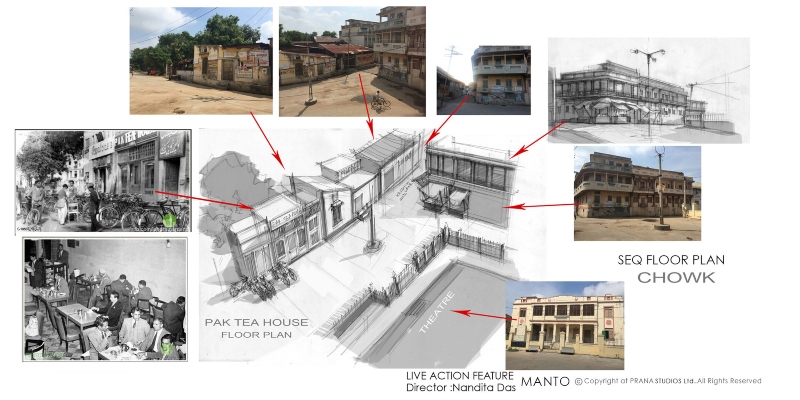
Driven by her passion for a good story, as a visual development artist, Rupali Gatti has witnessed remarkable stories take shape from paper to the screen.
A visual development (VD) artist is the person responsible for creating the look and feel of characters, sets and entire worlds for movies and shows. With 25 years of experience as a concept artist, environment designer and production designer, Gatti has worked on notable films like Baahubali: The Beginning, Laal Kaptaan, Manto, Bombay Rose and shows like Leila.
“I have always been fascinated by films and moving pictures. I love to illustrate storytelling scripts,” said Gatti, who initially started her creative career in calligraphy and greeting card production. Becoming a concept artist was a surprising turn of events for her. Her first significant role in visual development was layout and background design, and since then, she has never doubted her chosen path.

According to Gatti, to pursue a career in visual development, one must possess exceptional artistic skills. “Learn to draw and to paint. Technology is just a tool,” she emphasised. “Technology has evolved since the time I started drawing for projects. And while I keep adapting to the latest tools, you will still find me with a pencil and paper.”
The task of a VD artist begins even before pre-production. They are given a brief of the feature film, short film or the show to be made, based on which they begin their research and start designing the concepts. While directors trust Gatti enough to share the entire script with her, many artists receive only a synopsis. Their research is mainly in the form of location scouting, photos as well as reading. “For one project, we went to Hampi,” Gatti recalled, “and experienced and absorbed that space.” And when she started work after coming back, the result was wonderful because she did not need any photos or Google search to design. But for such processes to take place, “you need people who believe in these processes. You need people around you who uplift you.”
Gatti herself was fortunate enough to have found mentors who have taught, supported and encouraged her throughout her career. Ram Mohan, Hans Bacher (Mulan, Who Framed Rogger Rabit, The Lion King, Beauty and the Beast) and Bill Dennis (one of the founders of Toonz Animation Studios) have had a significant influence on her life and work. Gatti also expressed her gratitude for collaborating with directors such as SS Rajamouli on Baahubali and Vishal Bhardwaj on the short film Fursat.

She described Rajamouli as “a humble, grounded person who is intensely focused.” Bhardwaj, she said, is “a gem of a person and very inspiring.” For Fursat, Gatti was part of the brainstorming sessions and the round table that took place before the shoot began. “Such discussions are focused more on how to create a beautiful film rather than solely considering the budget.”
Reflecting on her journey, Gatti encapsulated it in one sentence: “I have seen my name move from end credits to title credits.” And that is a testament for budding artists to pursue a career in visual development, she believes. Furthermore, she has valuable advice for those interested in environment or production design. “Learn traditional media. Specialise in a specific area, collaborate with people who specialise in different areas, and create content together. Generate your IP – believe in the process of developing something.” And apart from that, the most important habit to hone your skill is to draw one sketch every day, she suggested. “If you do one drawing every day, you will have 365 drawings at the end of the year. Make an archive of references that inspire you – things you see, hear, architecture and music you like.”

Gatti stresses the importance of creating a personal body of work because commissioned projects often leave artists little time to focus on their own drawings. And if the project they are working on never translates to screen, or gets shelved, the artists won’t have anything to showcase in their portfolio, because in several instances, they are not allowed to use commissioned work. Gatti believes that content owners should allow artists to display at least some of their work done on a project, considering the significant time and effort invested in it.
Currently involved in an undisclosed project, Gatti also teaches masterclasses at Pune’s Film and Television Institute of India. Her decision to enter the field of education stems from her desire to nurture a talented generation of visual development artists and shed light on this underappreciated craft. And we believe, given her own experiences and learnings from esteemed mentors, Gatti is poised to become an excellent mentor herself!
